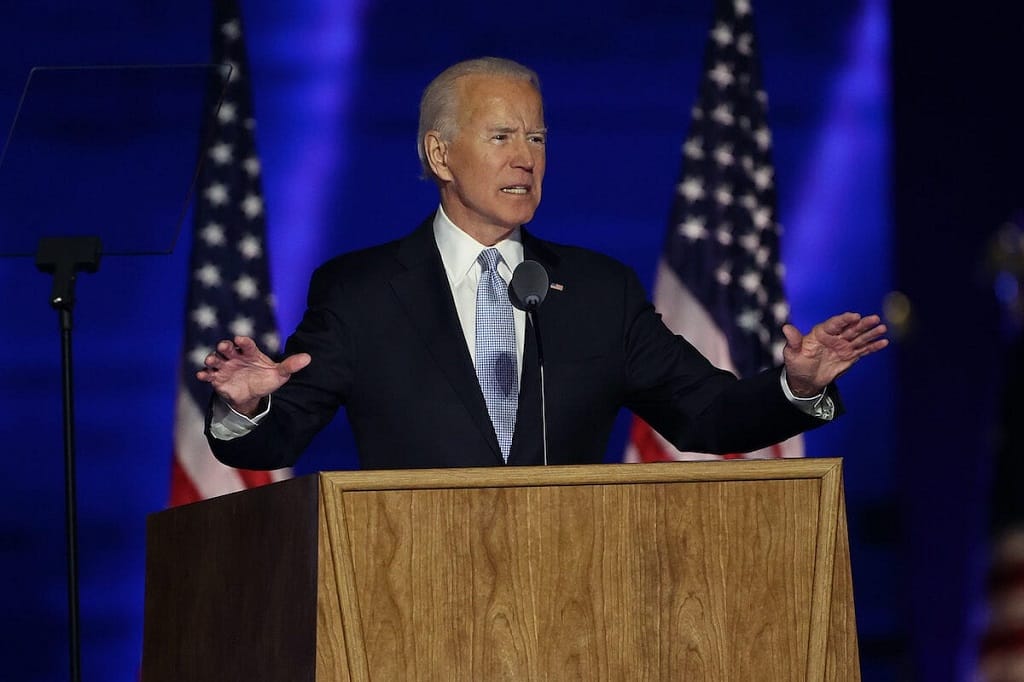Biden Presses Infrastructure Plan, FCC Date For Mapping, T-Mobile Fixed Wireless Service
April 8, 2021 – President Joe Biden wants America to think more broadly about what infrastructure means, countering Republican criticism against his new American Jobs Plan. In a Wednesday speech, Biden reiterated his goals for the $2.3-trillion infrastructure package and urged a broader view of what

April 8, 2021 – President Joe Biden wants America to think more broadly about what infrastructure means, countering Republican criticism against his new American Jobs Plan.
In a Wednesday speech, Biden reiterated his goals for the $2.3-trillion infrastructure package and urged a broader view of what infrastructure should mean for America, reported the Wall Street Journal.
The plan includes $100 billion for broadband, in addition to funding roads, bridges, ports, electric vehicles and charging stations, bringing manufacturing back to the U.S., and many other funding areas. The plan would be implemented over eight years and would raise the corporate tax rate from 21 percent to 28 percent.
Senate Minority Leader Mitch McConnell, R-Kentucky, called Biden’s plan a “trojan horse” for tax increases, more debt and more spending than what he considers infrastructure. “I think infrastructure is roads, it’s bridges, it’s broadband. Beyond that, they’ve sort of thrown everything but the kitchen sink into it,” McConnell said.
“It still depends on roads and bridges, ports and airports, rail and mass transit. But it also depends on having reliable high-speed internet, in every home, because today’s high-speed internet is infrastructure,” Biden said.
The American Jobs Plan is just the first part of Biden’s infrastructure proposal. The second part – the “American Families Plan” – is due sometime in April.
FCC sets May 7, 2021 for Digital Opportunity Data Collection
The Federal Communications Commission issued a final rule Wednesday on the new Digital Opportunity Data Collection, setting May 7, 2021 as the effective date for the new broadband mapping system that will improve on the Form 477 data.
Broadband mapping has been a long-standing issue for many years, which has historically been based on inaccurate Form 477 data. A “served” area is one in which a 25 megabit per second (Mbps) download and 3 Mbps upload speed are offered. One of the problems is that if a single location within a census block receives that minimum service, it counts the entire census block as “served,” regardless of other broadband service in that area.
The new DODC system, or Broadband Serviceable Location Fabric, will use more granular data to improve broadband maps. This will include service providers distinguishing between residential and business served locations, connection speeds offered, and geographic coordinates for fixed wireless base stations.
“This dataset will be one of the building blocks of our data collection and will help give us an accurate and comprehensive picture of the availability of fixed broadband service throughout the country,” Jessica Rosenworcel, acting chairwoman of the FCC, said in a March 16 statement.
T-Mobile offers 5G home internet service
T-Mobile announced the launch of their home internet service Wednesday, offering wireless broadband service to up to 30 million locations across the U.S., reports the Verge.
The service plan costs $60 with autopay, or $65 without, has no data caps, and will offer service on their 5G or 4G network depending on available coverage, whichever is faster. “T-Mobile says most customers will experience speeds of 100Mbps, and all eligible customers should see average speeds of 50Mbps,” reported the Verge.
However, consumers may experience slower connection in congested areas.
The company has been touting home internet access since it acquired Sprint in 2019, saying the merger was necessary to develop a competitive internet service to other providers.
T-Mobile has been running a pilot program for home internet service since before the merger with Sprint happened.









Member discussion